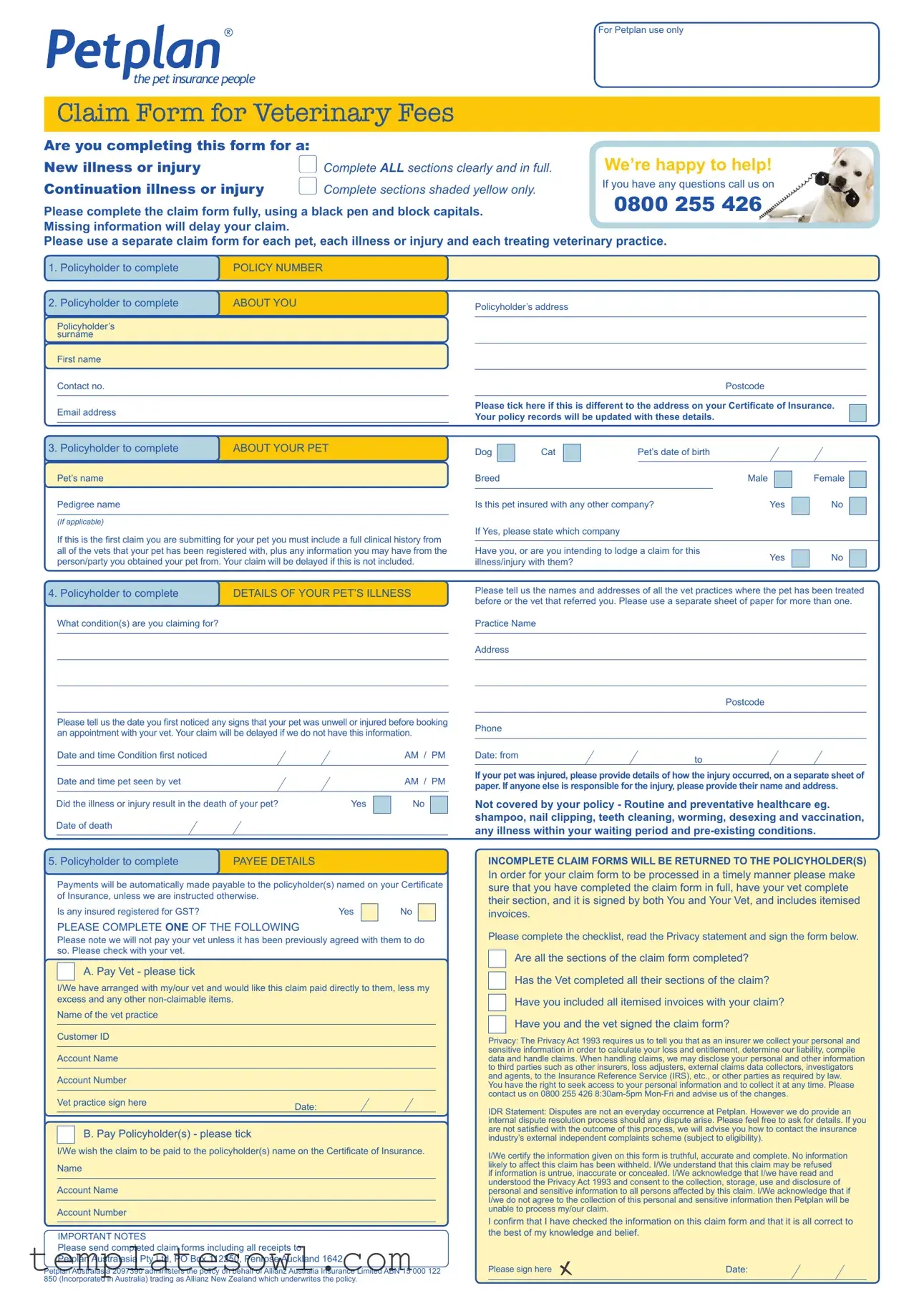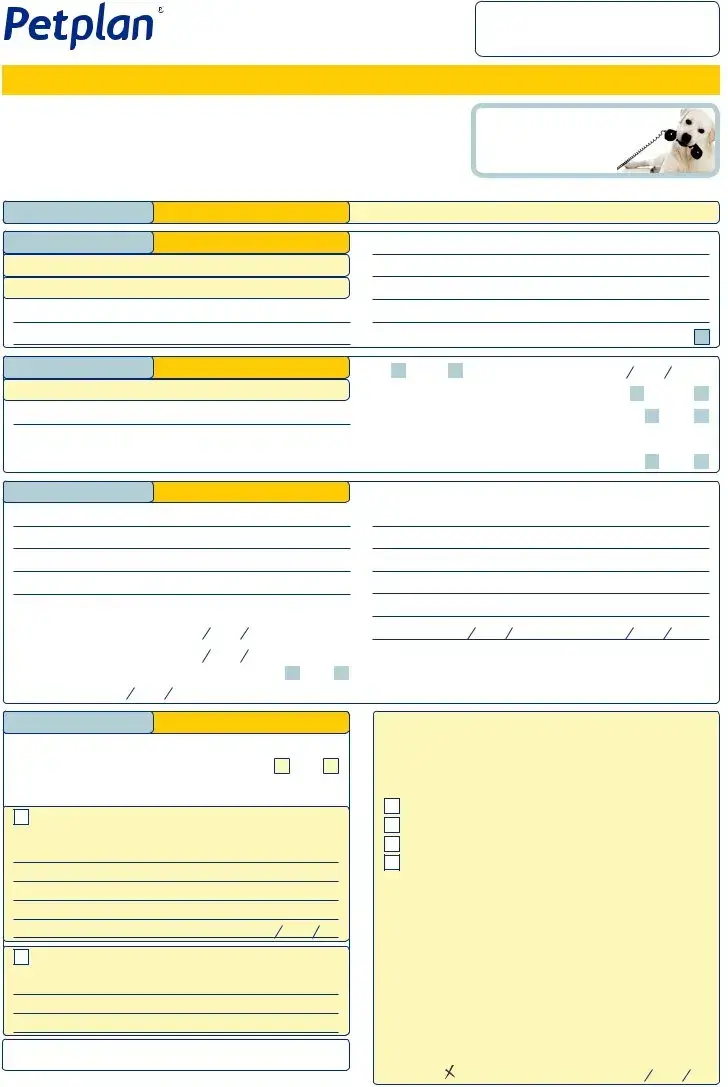What should I do to complete the Pet Plan Claim form?
Complete all sections of the form clearly and fully. Use a black pen and block capitals. Pay special attention to the sections shaded yellow if your claim is for a continuation of an illness or injury. Make sure to provide a separate claim form for each pet, each illness or injury, and each treating veterinary practice.
Why is a full clinical history required for my first claim?
If this is the first claim you're submitting for your pet, you must include a full clinical history from all the veterinary practices your pet has been registered with. This information helps us assess your claim accurately. Missing the clinical history will delay the processing of your claim.
What details do I need to provide about my pet's illness?
You need to provide the condition(s) you are claiming for and the date you first noticed any signs of illness or injury. Include the date and time your pet was seen by the vet. Failure to include this information will delay your claim.
How can I choose to have the claim payment made?
You can choose to have the payment made either directly to your vet or to yourself as the policyholder. If you wish for the payment to go directly to your vet, ensure you have arranged this with them beforehand and complete the necessary sections on the claim form.
What happens if the claim form is incomplete?
Incomplete claim forms will be returned to you. To prevent delays, ensure all sections are completed, the vet has filled in their part, and both you and your vet have signed the form. Include all itemized invoices as well.
What is the importance of the Privacy statement?
The Privacy statement informs you about how your personal and sensitive information might be used and disclosed. This includes sharing with third parties as necessary for handling claims. Your consent is needed to process your claim, and without it, Petplan will be unable to proceed.
Why is it necessary to specify if my pet has other insurance?
You must disclose if your pet is insured with another company or if you plan to lodge a claim for the same illness or injury with them. This information is crucial for us to determine how to proceed with your claim fairly and accurately.
What should I do if I don’t receive an acknowledgment for my claim?
If you do not receive an acknowledgment after submitting your claim, contact our customer care center at 0800 255 426. They can update your details in our records and confirm whether your claim has been received and lodged.
What is included in the definition of routine and preventative healthcare?
Routine and preventative healthcare includes treatments like shampooing, nail clipping, teeth cleaning, worming, desexing, and vaccinations. Claims related to these services are not covered by your policy.
How can I get an update on my claim status?
During the processing time of your claim, you can email us at info@petplan.net.nz for updates. We process claims in the order they are received, and we aim to resolve your claim as quickly as possible.


 Continuation illness or injury
Continuation illness or injury 
